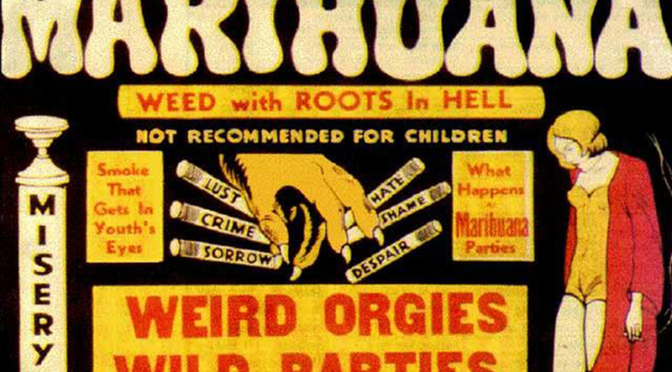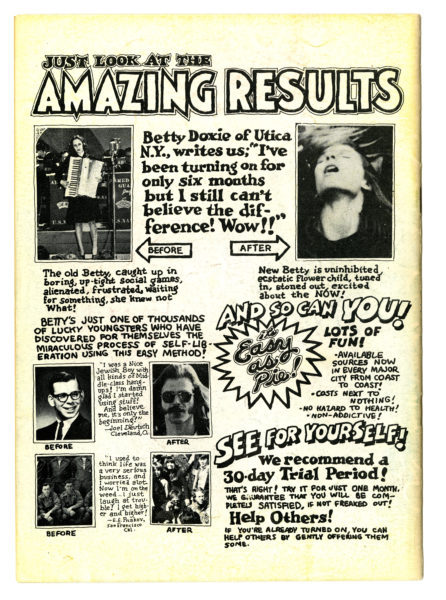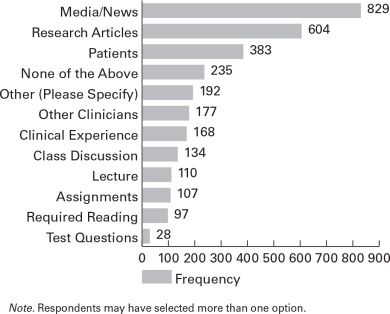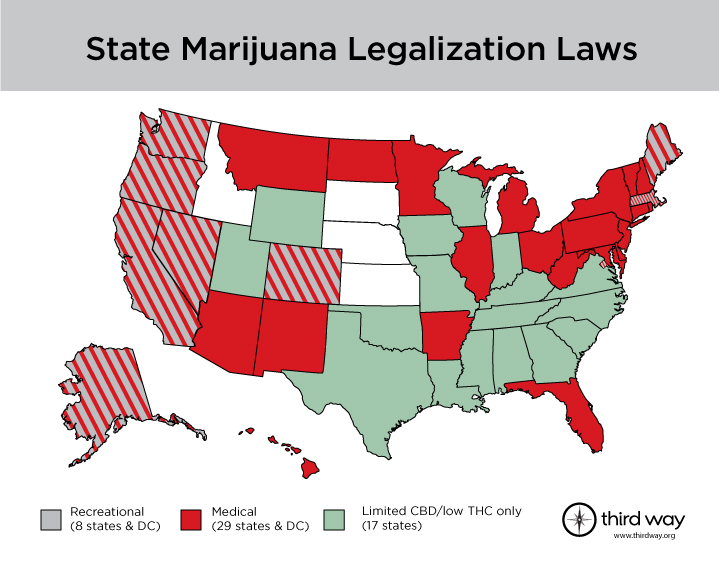Introduction
The evolution of cannabis perception in popular culture has been a remarkable journey, marked by shifts in attitudes, legal frameworks, and artistic representations. From the sensationalism of “Reefer Madness” to the era of legalization, this article explores the complex relationship between cannabis and popular culture, highlighting key milestones and societal shifts.
The evolution of cannabis perception in popular culture has indeed been a remarkable journey, akin to a winding river that meanders through time, marked by significant shifts in attitudes, legal frameworks, and artistic representations. From the sensationalism of “Reefer Madness” to the era of legalization, this article delves deeper into the intricate relationship between cannabis and popular culture, emphasizing pivotal milestones and profound societal shifts that have shaped this dynamic landscape.
The Early Demonization: The story begins with the demonization of cannabis in the early 20th century, a period aptly exemplified by the propaganda film “Reefer Madness.” During this era, cannabis was portrayed as a dangerous drug that could lead people down a path of madness and moral decay. This sensationalized portrayal was a reflection of the prevailing societal fears and misinformation of the time.
Counterculture and Rebellion: The 1960s and 1970s ushered in a countercultural revolution that significantly altered perceptions of cannabis. The flower-power generation embraced marijuana as a symbol of rebellion against authority and conformity. Iconic events like Woodstock became synonymous with cannabis use, and artists like Bob Marley and Jimi Hendrix incorporated its imagery and themes into their music.
The War on Drugs: The late 20th century saw the intensification of the War on Drugs, leading to harsher legal penalties and further stigmatization of cannabis. Yet, even during this period, cannabis persisted in popular culture, often as a symbol of resistance against government policies.
The Medical Cannabis Movement: The late 20th and early 21st centuries brought a renewed focus on the medicinal properties of cannabis. This shift in perception coincided with a growing body of scientific research supporting its therapeutic potential. States and countries began to enact medical cannabis programs, providing relief for patients suffering from various ailments.
The Road to Legalization: The 21st century witnessed a sea change in cannabis attitudes and legislation. Colorado and Washington became the first U.S. states to legalize recreational cannabis in 2012, setting off a domino effect as other jurisdictions followed suit. This wave of legalization not only challenged existing paradigms but also created a burgeoning cannabis industry.
Cannabis in Popular Media: Television shows like “Weeds” and movies like “Pineapple Express” have contributed to normalizing cannabis use in popular culture. These portrayals often mix humor and social commentary, showcasing evolving perceptions.
Diverse Artistic Expressions: Musicians, painters, writers, and filmmakers continue to draw inspiration from cannabis, crafting diverse and thought-provoking expressions. From rap lyrics to cannabis-themed art exhibitions, the plant’s influence on art and creativity is undeniable.
Social Equity and Justice: As cannabis becomes more accepted, the conversation around social equity and justice has gained prominence. Many argue that legalization should address the historical disparities in drug arrests and convictions and create opportunities for marginalized communities.
Global Impact: The ripple effects of changing cannabis perceptions extend globally, influencing drug policy discussions and legislation in countries far and wide. International conversations about drug regulation and reform are increasingly influenced by the experiences of regions where cannabis has been legalized.
In conclusion, the journey of cannabis through popular culture reflects the ebb and flow of societal norms, politics, and scientific discovery. It’s a tale of transformation from fear and misinformation to acceptance, medical recognition, and an ever-evolving role in art and society. As we navigate this evolving landscape, it’s clear that the relationship between cannabis and popular culture will continue to be a captivating and transformative one.
For additional details, consider exploring the related content available here Marijuana Timeline | Busted – America’s War On Marijuana …
In the early 20th century, the United States saw the emergence of a sensationalized campaign against cannabis, popularly known as “Reefer Madness.” This propaganda campaign portrayed cannabis use as a menace to society, inducing madness, violence, and moral decay. The film of the same name, released in 1936, epitomized this hysteria. The exaggerated and unfounded claims in “Reefer Madness” contributed to the stigmatization of cannabis users and reinforced negative stereotypes.
In the early 20th century, the United States witnessed the emergence of a sensationalized campaign against cannabis that has come to be known as “Reefer Madness.” This propaganda campaign marked a pivotal moment in the history of drug policy and public perception, as it aimed to vilify cannabis use and instill fear in the hearts of the American public.
“Reefer Madness,” the 1936 film that epitomized this hysteria, painted a lurid and exaggerated picture of the supposed consequences of cannabis consumption. The film depicted cannabis users as unhinged and morally corrupt individuals who descended into madness, violence, and debauchery after partaking in the plant. This portrayal was rife with sensationalism, distortion of facts, and a complete disregard for scientific evidence.
The impact of “Reefer Madness” on public opinion was profound. It played a substantial role in perpetuating the stigmatization of cannabis users and cementing negative stereotypes that endure to some extent even today. The film’s portrayal of cannabis as a “killer weed” that led to insanity contributed to the public’s fear and misunderstanding of the plant. This fear, in turn, fueled the political and legislative efforts that culminated in the Marihuana Tax Act of 1937, effectively criminalizing cannabis at the federal level in the United States.
The “Reefer Madness” campaign served as a powerful tool for proponents of cannabis prohibition, and it was used to legitimize a harsh and punitive approach towards cannabis users. This approach resulted in countless arrests and convictions for non-violent cannabis-related offenses, disproportionately affecting marginalized communities.
Over time, as scientific research and a more nuanced understanding of cannabis emerged, the exaggerated claims made in “Reefer Madness” were debunked. The medical community began to recognize the potential therapeutic benefits of cannabis, and public opinion gradually shifted towards a more rational and evidence-based approach to drug policy.
In recent decades, many states in the U.S. have moved to decriminalize or legalize cannabis for medical and recreational use, reflecting a growing acknowledgment of its potential benefits and a rejection of the unfounded hysteria perpetuated by “Reefer Madness” and similar campaigns. Nevertheless, the legacy of this sensationalized propaganda campaign continues to influence the way society views cannabis, making it a crucial part of the ongoing conversation about drug policy reform and public perception.
Should you desire more in-depth information, it’s available for your perusal on this page: The Illegalization of Marijuana: A Brief History | Origins

The 1960s marked a pivotal period in the perception of cannabis. The counterculture movement challenged societal norms, and cannabis became a symbol of resistance and rebellion. Artists, musicians, and activists openly embraced cannabis, using it as a means of self-expression and a catalyst for societal change. The cultural impact of the ’60s led to a shift in perception, as cannabis gained acceptance as part of the counterculture identity.
The 1960s marked a pivotal period in the perception of cannabis. The counterculture movement challenged societal norms, and cannabis became a symbol of resistance and rebellion. Artists, musicians, and activists openly embraced cannabis, using it as a means of self-expression and a catalyst for societal change. The cultural impact of the ’60s led to a shift in perception, as cannabis gained acceptance as part of the counterculture identity.
The Counterculture Revolution
During the 1960s, a wave of social and political change swept through the United States and other parts of the world. This period, often referred to as the counterculture revolution, was marked by a rejection of traditional values, a call for civil rights, and a demand for more personal freedom. It was in this atmosphere of rebellion and exploration that cannabis found its place as a symbol of the counterculture.
Cannabis as a Tool for Self-Exploration
Cannabis was embraced by many as a tool for self-exploration and introspection. Its ability to alter perception and consciousness made it appealing to those seeking to break free from societal constraints and explore alternative perspectives. Artists and writers, such as the Beat Generation and figures like Jack Kerouac and Allen Ginsberg, incorporated cannabis into their creative processes, producing works that challenged the status quo and encouraged individuality.
Music and Cannabis
The connection between cannabis and music during this era was particularly strong. Iconic musicians like Bob Dylan, The Beatles, and Jimi Hendrix openly discussed their cannabis use and incorporated pro-cannabis themes into their songs. Cannabis not only influenced the music but also served as a means of bonding and connection among fans and performers at concerts and music festivals.
Political Activism and Cannabis
Cannabis also played a role in the political activism of the 1960s. It was seen as a symbol of resistance against the Vietnam War and the establishment. Activists like Abbie Hoffman and Jerry Rubin, leaders of the Youth International Party (Yippies), used theatrical protests and cannabis-smoking events to challenge authority and promote their anti-establishment agenda.
Cultural Impact and Shifting Perceptions
The counterculture’s embrace of cannabis had a profound impact on the public’s perception of the plant. Cannabis became closely associated with the ideals of freedom, individuality, and social change. This shift in perception contributed to growing support for cannabis legalization and decriminalization efforts in the following decades.
Legacy in Modern Cannabis Culture
The counterculture’s influence on cannabis culture persists today. Cannabis remains a symbol of countercultural values, and many enthusiasts continue to view it as a means of self-expression and resistance to conformity. The legacy of the ’60s counterculture movement can be seen in the modern cannabis legalization movement, which draws upon the principles of personal freedom, social justice, and individual rights.
In conclusion, the 1960s were a transformative period in the history of cannabis. It emerged from the shadows to become a powerful symbol of resistance, artistic expression, and social change. The counterculture movement of that era not only challenged societal norms but also played a significant role in reshaping the perception of cannabis, paving the way for the changing attitudes and policies toward the plant that continue to evolve in the 21st century.
Looking for more insights? You’ll find them right here in our extended coverage: Marijuana Timeline | Busted – America’s War On Marijuana …

In the late 20th century, medical cannabis emerged as a significant factor in reshaping cannabis perception. Patients suffering from various medical conditions advocated for the therapeutic benefits of cannabis. This led to the gradual acceptance of medical cannabis in many parts of the world, as it became clear that cannabis had legitimate medical uses, particularly in managing pain, nausea, and neurological disorders.
In the late 20th century, medical cannabis emerged as a significant factor in reshaping cannabis perception, marking a profound turning point in its history. Patients, previously stigmatized and marginalized, suffering from a wide array of medical conditions, began to passionately advocate for the therapeutic benefits of cannabis. Their compelling stories and undeniable evidence gradually shifted public and regulatory perspectives.
This grassroots movement ignited a transformation, leading to the widespread acceptance of medical cannabis across the globe. The realization that cannabis possessed legitimate medical utility, particularly in alleviating pain, easing nausea, and managing neurological disorders, revolutionized the healthcare landscape. It prompted governments and medical communities to take a closer look at this once controversial plant.
Today, medical cannabis stands as a beacon of hope for countless individuals battling chronic pain, debilitating illnesses, and debilitating symptoms. It serves as a testament to the power of advocacy and science in changing societal attitudes and policies, ultimately improving the quality of life for many. As research continues to uncover more therapeutic applications, the journey of medical cannabis remains an inspiring testament to the resilience of patients and the potential for transformative change in the world of medicine and beyond.
Don’t stop here; you can continue your exploration by following this link for more details: Cannabis use, attitudes, and legal status in the U.S.: A review – PMC

Artistic representation in popular culture played a substantial role in altering cannabis perception. Music, film, and literature often depicted cannabis in a more nuanced and positive light. Iconic artists like Bob Marley, who celebrated cannabis in their work, contributed to a more accepting attitude towards its use.
Artistic representation in popular culture has undeniably played a pivotal role in reshaping the public perception of cannabis. Through music, film, literature, and various other forms of artistic expression, cannabis began to be portrayed in a more nuanced and positive light, challenging the stigmas that had long surrounded it. Iconic artists like Bob Marley stand as prime examples of how cultural figures helped foster a more accepting attitude towards cannabis use.
Music, with its profound ability to touch the human soul, has been a particularly influential medium in shifting the narrative around cannabis. Artists across genres have used their lyrics and melodies to celebrate the plant, its effects, and the culture surrounding it. Bob Marley’s reggae music, for instance, not only featured explicit references to cannabis but also conveyed a broader message of unity, peace, and spiritual connection that resonated with audiences worldwide. His advocacy for the herb transcended borders, making cannabis a symbol of rebellion against societal norms and an emblem of freedom.
Film and literature, too, have played their part in altering cannabis perception. Countless movies and books have portrayed characters who use cannabis responsibly and creatively, challenging the outdated stereotype of the lazy, unproductive stoner. These artistic works have depicted the plant as a catalyst for introspection, inspiration, and even healing, allowing audiences to empathize with characters who incorporate cannabis into their lives in a balanced and meaningful way.
Moreover, the emergence of the counterculture movement in the 1960s and 1970s brought cannabis to the forefront of popular culture. It became a symbol of youthful rebellion, individualism, and the rejection of conformity. Artists like Jimi Hendrix, The Beatles, and Pink Floyd incorporated cannabis themes into their music and lifestyles, amplifying the message of freedom and self-expression associated with the plant.
As these artistic representations continued to permeate popular culture, a more accepting attitude towards cannabis use gradually took hold. The idea that cannabis could be enjoyed responsibly and contribute positively to one’s life gained traction, challenging the long-held prejudices against it.
In the contemporary era, the impact of artistic representation on cannabis perception persists. With the ongoing legalization efforts and the recognition of cannabis’s potential therapeutic benefits, artists continue to explore and celebrate the multifaceted aspects of cannabis culture in their work. Through their creativity and influence, they contribute to a more open and informed discourse surrounding cannabis, ensuring that its positive aspects are celebrated alongside responsible use. In this way, artistic representation in popular culture remains a powerful force in reshaping society’s perception of cannabis.
If you’d like to dive deeper into this subject, there’s more to discover on this page: Reefer Madness! The Twisted History of America’s Marijuana Laws …

The 21st century witnessed a significant shift towards cannabis legalization. Countries and states around the world began to reconsider their cannabis policies. The economic potential of the cannabis industry, coupled with the recognition that criminalization led to unnecessary social and legal problems, prompted this change. Uruguay became the first country to fully legalize cannabis in 2013, and since then, numerous U.S. states and other countries have followed suit.
The 21st century witnessed a significant shift towards cannabis legalization, a transformation that reshaped not only policies but also societal perspectives on this once-stigmatized plant. This global reconsideration of cannabis policies was driven by several interwoven factors that underscored its potential to bring about positive change.
The economic potential of the cannabis industry played a pivotal role in this shift. Governments and entrepreneurs recognized that the cannabis market represented a burgeoning economic opportunity. It promised substantial tax revenue, job creation, and the potential to revitalize struggling economies. This economic incentive prompted many nations and states to reevaluate their stance on cannabis, shifting from prohibition to regulation.
However, beyond economics, there was a growing acknowledgment that the criminalization of cannabis had led to a host of unnecessary social and legal problems. Over the years, countless lives had been negatively impacted by harsh penalties and the collateral consequences of cannabis-related convictions. This realization fueled a broader societal debate on the fairness and effectiveness of such punitive measures, ultimately driving the call for reform.
Uruguay’s groundbreaking decision to fully legalize cannabis in 2013 marked a turning point. It demonstrated that a nation could successfully navigate the uncharted waters of legalization, implementing a comprehensive regulatory framework that ensured public safety while respecting personal freedoms. Uruguay’s bold move served as a catalyst for change, inspiring other countries and U.S. states to embark on their own journeys towards cannabis legalization.
In the United States, for instance, states like Colorado and Washington blazed the trail by legalizing recreational cannabis in 2012, just ahead of Uruguay. This domino effect continued as more states recognized the benefits of regulation over prohibition. The cannabis industry began to flourish in these pioneering regions, showcasing the potential for responsible cannabis commerce.
Internationally, countries like Canada, Mexico, and several European nations soon joined the movement, further legitimizing the global shift towards cannabis legalization. The United Nations, too, played a role by reevaluating its stance on cannabis, urging member states to reconsider their policies and prioritize public health and harm reduction over punitive measures.
As the 21st century progressed, the cannabis legalization movement continued to gain momentum. This transformation was not just about economics and criminal justice reform; it symbolized a broader shift in societal attitudes towards personal choice, medical benefits, and responsible adult use. The journey from ancient rituals to modern consumption had come full circle, with cannabis now emerging from the shadows of prohibition to take its place as a legitimate and regulated industry, poised to shape the future in countless ways.
If you’d like to dive deeper into this subject, there’s more to discover on this page: The Mysterious History Of ‘Marijuana’ : Code Switch : NPR

While cannabis legalization has made significant progress, the debate continues. Supporters argue for the regulation and taxation of cannabis, emphasizing its economic benefits and harm reduction potential. Critics voice concerns about potential health risks and the need for comprehensive regulation.
While cannabis legalization has made significant progress, the debate continues to evolve, reflecting the complex nature of this issue. Supporters of legalization champion the regulation and taxation of cannabis, emphasizing its potential economic benefits and harm reduction capabilities.
Economic Advantages: Proponents highlight how the legal cannabis industry can contribute to economic growth. Legalization has the potential to create jobs, stimulate tourism, and generate tax revenue. In some regions where cannabis has been legalized, tax revenues have been channeled into education, healthcare, and community development, benefiting society as a whole.
Harm Reduction: Supporters also emphasize the harm reduction potential of regulated cannabis. By bringing the industry out of the shadows, legalizing it can help reduce the involvement of criminal organizations in the cannabis trade. Additionally, regulations can ensure product quality and safety, reducing the risks associated with contaminated or adulterated substances.
However, the debate surrounding cannabis legalization is far from one-sided. Critics raise valid concerns about potential drawbacks and advocate for comprehensive regulation:
Health Risks: Some argue that the long-term health risks of cannabis use, particularly among adolescents and heavy users, are not yet fully understood. Concerns include cognitive impairment, addiction, and mental health issues. Critics emphasize the need for ongoing research and education to mitigate these risks.
Comprehensive Regulation: Critics stress the importance of comprehensive regulation to address potential pitfalls, such as overcommercialization and marketing targeting vulnerable populations. They argue that without stringent oversight, the cannabis industry could prioritize profits over public health.
In this ongoing debate, finding common ground is crucial. It often involves striking a balance between individual freedoms, economic interests, and public health. Policymakers and stakeholders must continue to engage in open dialogue, relying on scientific research and evidence-based approaches to inform the direction of cannabis legalization. This evolving conversation will shape the future of cannabis policy, ensuring that the benefits are maximized while addressing and mitigating potential risks.
For additional details, consider exploring the related content available here Reefer Madness! The Twisted History of America’s Marijuana Laws …

The evolution of cannabis perception in popular culture is a testament to the power of social movements, scientific discovery, and the influence of art and media. From the hysteria of “Reefer Madness” to the era of legalization, cannabis perception has undergone a profound transformation. As society continues to grapple with this complex issue, it remains evident that the cannabis story is far from over, with ongoing discussions about its role in medicine, society, and culture.
The evolution of cannabis perception in popular culture is a testament to the power of social movements, scientific discovery, and the profound influence of art and media. The journey from the hysteria of “Reefer Madness” to the contemporary era of legalization has been a remarkable one, marked by seismic shifts in public opinion and policy.
In the mid-20th century, the portrayal of cannabis in films like “Reefer Madness” was emblematic of a society gripped by fear and misinformation. It depicted the plant as a gateway to madness and moral decay, fueling a narrative that led to harsh legal restrictions and stigmatization.
However, as the decades passed, courageous social movements emerged to challenge these perceptions. The counterculture of the 1960s and 70s, for example, championed cannabis as a symbol of rebellion and spiritual exploration. These movements not only defied existing norms but also laid the groundwork for more informed conversations about the plant’s potential benefits and risks.
Scientific discovery also played a pivotal role. Research into the plant’s compounds, particularly cannabinoids like THC and CBD, revealed its therapeutic potential. This newfound understanding led to the development of medical cannabis programs in various parts of the world, providing relief to patients suffering from a range of ailments, from chronic pain to epilepsy.
Art and media have been influential in humanizing the cannabis experience. Books, movies, documentaries, and music have portrayed cannabis as a source of creativity, relaxation, and even self-discovery. These cultural depictions have helped shift perceptions from fear to curiosity, and from judgment to acceptance.
Today, with an increasing number of countries and states legalizing cannabis for medical and recreational use, society continues to grapple with complex questions about regulation, taxation, and responsible consumption. The ongoing discussions about cannabis’s role in medicine, society, and culture are a testament to its enduring significance and the evolving attitudes toward this ancient plant.
As we move forward, the cannabis story is far from over. It remains a dynamic and multifaceted narrative, shaped by science, politics, culture, and the very human desire to understand and harness the potential of this remarkable botanical treasure. The future promises even more discoveries, debates, and, hopefully, a balanced approach that respects both individual freedoms and public health considerations in the ever-evolving cannabis landscape.
To delve further into this matter, we encourage you to check out the additional resources provided here: Archived | Toward a Drugs and Crime Research Agenda for the 21st …
More links
Should you desire more in-depth information, it’s available for your perusal on this page: Reefer Madness! The Twisted History of America’s Marijuana Laws …
